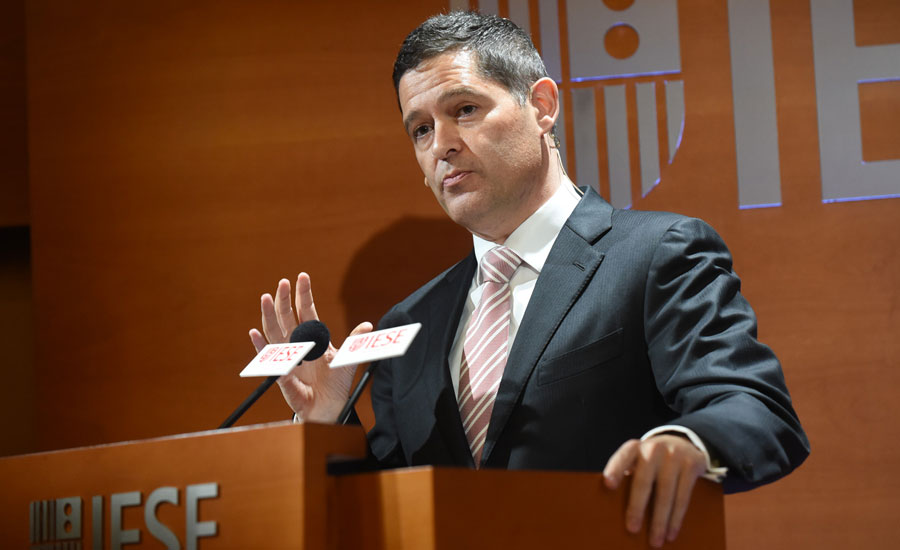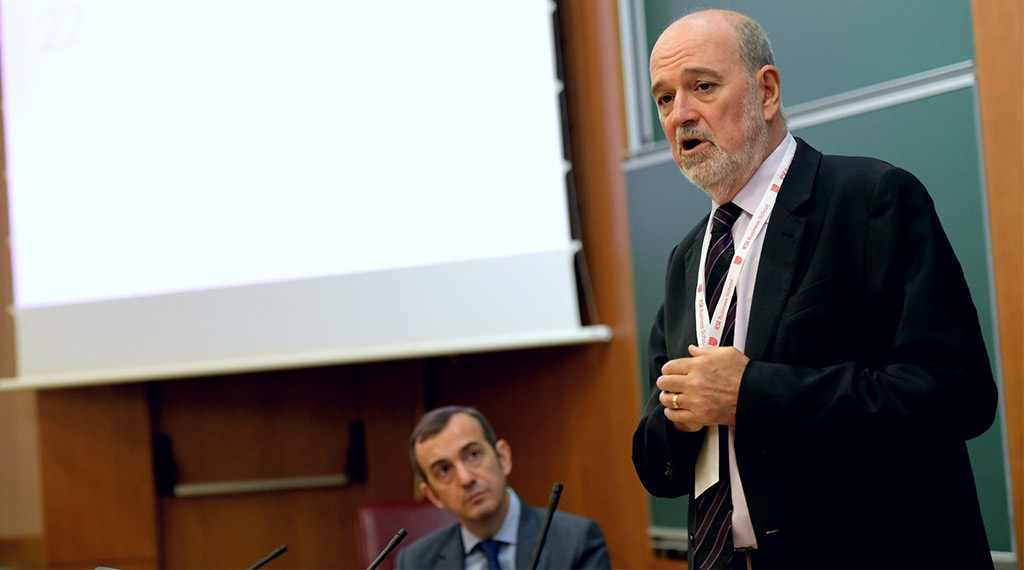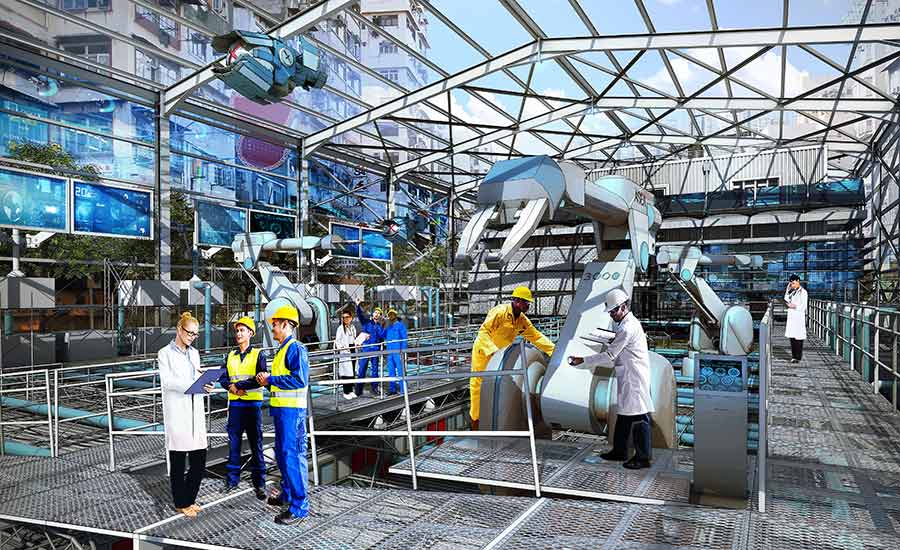Stories
The Car of the Future
33 IESE Auto looks at evolving technologies, business models and organizations
November 16, 2018

“Things can change very quickly: today the electric car seems superb … and yet tomorrow it isn’t. This happened a hundred years ago.”
Professor Marc Sachon opened the recent 33 IESE Auto Industry Meeting, organized in collaboration with KPMG, with a look to the future of cars and the companies that build them.
“I believe that the electric car has a great future, but not an electric car that weighs two tons or more, with a battery that weighs 800 kilos.” For Sachon, “the electric car has a great future in cities like Barcelona, with small batteries, with new business models, with new concepts of mobility.”
But electric cars still have a few hurdles to clear, including batteries’ weight, the fluctuating prices of raw materials, the emissions generated by their manufacture – “highly contaminating, although nobody talks about this” – and the cost of their recycling.
Even so, some manufacturers have already committed to the electric or hybrid car. Germán López Madrid, a senior advisor to Volvo, noted the electric car and autonomous driving are at the core of its future strategies. “We are at stage three of five, but the legislation is five or seven years behind. And without the legislation, we can’t operate,” he stated. He also has a focus on business models based on transport as a service, destined to revolutionize mobility in dense, urban areas.
Coexistence of Technologies and Business Models
For Francisco Pérez Botello, CEO of Volkswagen Group Distribution Spain, changes in the sector are being driven by three great disruptive aspects simultaneously: electrification, marked by the switch from the combustion engine to the electric motor; urbanization, which is bringing about the transition from the owned car to the shared car; and digitalization, which, among many other things, is going to enable the rapid development of the connected car and autonomous driving.
Furthermore, he emphasized the changes in cultural and organizational models required to adapt to this transformation. In the end, he points out, “technology is only the catalyst of the transformation. The real leaders of the transformation are the people who are seeking out and managing this technology.”
For Pérez Botello, the challenge is in “to create more fluid and dual organizations, ambidextrous, in which all the members are able to perform two roles simultaneously: that of managers of the traditional business and that of operators of the new models.”
Preparing for Digital Transformation
At SEAT, the commitment to transformation has moved beyond accepting that the future will or will not be hybrid and collaborative, and to understanding that training and cultural change are the best way to face the digital revolution.
For Xavier Ros, SEAT board member and executive vice president of human resources, “the man-machine dichotomy will cease to exist, and rather there will be a collaboration: machines are going to enhance the capabilities of people and people will be key to helping machines develop their full potential.”
In his opinion, we have already overcome the process standardization wave and now “we are on the creation wave of processes that are flexible and versatile. The companies that just replace human capital with machinery will collapse, and those that think in terms of collaboration between humans and machines are those that will be market leaders,” he declared.
At SEAT, this takes shape with a strategic focus on continuous learning geared towards the development of new skills (digital culture, information management, strategic vision) and for the adaptation of the corporate culture to new styles of hands-on leadership, less hierarchical organizational structures and different professional profiles, but sharing an openness to change.
It is a commitment seconded by Matías Carnero, president of the UGT trade union in Catalonia: “Everybody must have the opportunity to retrain so as to adapt to the new reality.” Because, although robots are not going to replace people, the potential loss of jobs associated with industry 4.0 is a real threat, “and this is only fixed with education and vocational training.”


